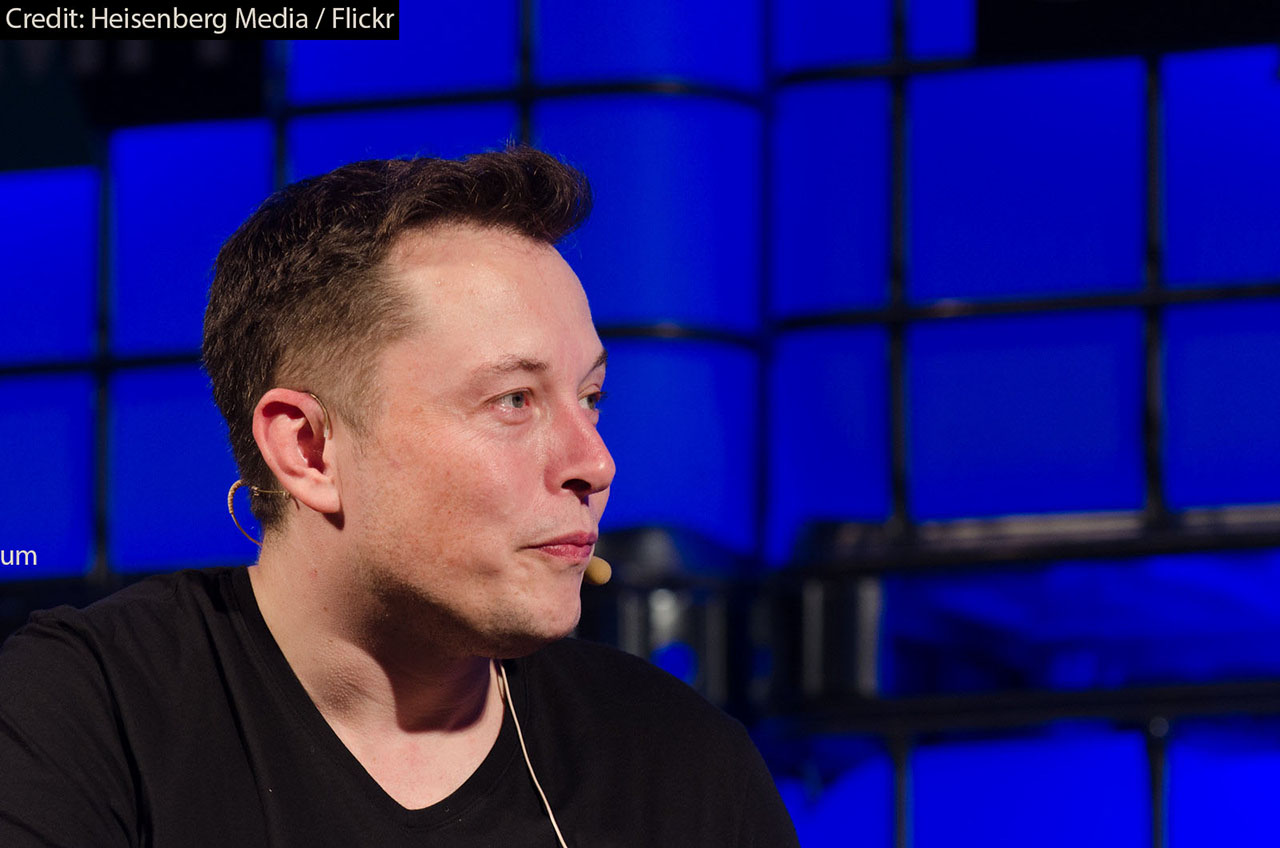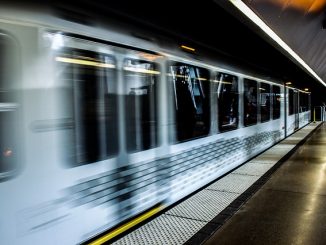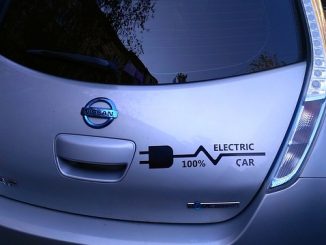I’ve long been an Elon Musk/Tesla skeptic, to put it mildly. I’ve called him out as a crony capitalist who milks subsidies, and as a con man.
Most recently, I said that one Musk company’s (SpaceX) purchase of the debt of another Musk company–Solar City–should raise alarms. Well, today four alarms rang: Tesla (TSLA) bid to take over Solar City, and to pay for the acquisition in Tesla stock. Solar City (SCTY) stock soared on the news: Tesla plunged. The effect of the announcement was market cap negative: Tesla’s value declined more than SCTY’s rose.
Both Solar City and Tesla rely on government subsidies, and crucially, on very dodgy financing models and questionable accounting. Like many other solar firms, Solar City was teetering on the verge of bankruptcy. Such an event would have a direct financial consequence for Musk, and given Elon’s large (and leveraged) ownership stake in Tesla, this would impact Tesla adversely.
Moreover, there’s a serious possibility that a SCTY bankruptcy would reveal a byzantine web of financial connections among Musk’s various ventures. Given the boundary-pushing accounting and tenuous financial condition of all of his companies, there is no doubt a lot hidden that Elon desperately wants to keep hidden.
But perhaps most importantly, a SCTY bankruptcy would undermine Musk’s image as a visionary genius and business colossus. This image is vital to keeping Musk, Inc. going. It is vital because this image is a key element of every con, and if Musk isn’t a con man, he sure does a great impression of one.
One key tell of that is that whenever people start expressing doubts about Tesla, Musk has some grandiose announcement about the next new big thing, even though he hasn’t delivered on the last new big thing, or even the new big thing before that. That’s a classic con man trick.
This is also a vital part of the Tesla funding model. In addition to subsidies, Tesla relies heavily on customer deposits for funding. In order to get those deposits, Tesla has to make promises on production that it has not been able to keep. But enough people are dazzled by Elon’s pitch that they fork over the cash that he needs to keep the endeavor aloft.
I read an investment report that referred to such types as “loss tolerant investors.” That’s a polite way of saying “suckers.”
A major Elon fail would put the con model at risk. So despite the fact that the initial reaction to the deal has been incredulity and outrage, and despite the fact that that reaction was utterly predictable, Musk has plunged ahead. That should give you some idea of his desperation.
In the announcement of the bid, Tesla served up a load of argle-bargle that should make any PR person blanch:
Tesla’s mission has always been tied to sustainability. We seek to accelerate the world’s transition to sustainable transportation by offering increasingly affordable electric vehicles. And in March 2015, we launched Tesla Energy, which through the Powerwall and Powerpack allow homeowners, business owners and utilities to benefit from renewable energy storage.
It’s now time to complete the picture. Tesla customers can drive clean cars and they can use our battery packs to help consume energy more efficiently, but they still need access to the most sustainable energy source that’s available: the sun.
The SolarCity team has built its company into the clear solar industry leader in the residential, commercial and industrial markets, with significant scale and growing customer penetration. They have made it easy for customers to switch to clean energy while still providing the best customer experience. We’ve seen this all firsthand through our partnership with SolarCity on a variety of use cases, including those where SolarCity uses Tesla battery packs as part of its solar projects.
So, we’re excited to announce that Tesla today has made an offer to acquire SolarCity. A copy of Tesla’s offer is provided below.
If completed, we believe that a combination of Tesla and SolarCity would provide significant benefits to our shareholders, customers and employees:
- We would be the world’s only vertically integrated energy company offering end-to-end clean energy products to our customers. This would start with the car that you drive and the energy that you use to charge it, and would extend to how everything else in your home or business is powered. With your Model S, Model X, or Model 3, your solar panel system, and your Powerwall all in place, you would be able to deploy and consume energy in the most efficient and sustainable way possible, lowering your costs and minimizing your dependence on fossil fuels and the grid.
- We would be able to expand our addressable market further than either company could do separately. Because of the shared ideals of the companies and our customers, those who are interested in buying Tesla vehicles or Powerwalls are naturally interested in going solar, and the reverse is true as well. When brought together by the high foot traffic that is drawn to Tesla’s stores, everyone should benefit.
- We would be able to maximize and build on the core competencies of each company. Tesla’s experience in design, engineering, and manufacturing should help continue to advance solar panel technology, including by making solar panels add to the look of your home. Similarly, SolarCity’s wide network of sales and distribution channels and expertise in offering customer-friendly financing products would significantly benefit Tesla and its customers.
- We would be able to provide the best possible installation service for all of our clean energy products. SolarCity is the best at installing solar panel systems, and that expertise translates seamlessly to the installation of Powerwalls and charging systems for Tesla vehicles.
- Culturally, this is a great fit. Both companies are driven by a mission of sustainability, innovation, and overcoming any challenges that stand in the way of progress.
Note the appeal to enviro-vanity. “Shared ideals.” “Culture.” Vague synergies: “including by making solar panels add to the look of your home.” Are they serious? Is that the best he can come up with? “Customer-friendly financing products.” Another joke: the unviability of the Solar City financing model is exactly what put the company into its current straits. So extending this unviable financing model to autos is somehow going to do wonders for Tesla? The release mentions charging systems. A few years ago Elon promised thousands. There are currently 616 worldwide, and Elon has faded his original promise to provide free charging: Model S customers will have to pay.
Further, there’s no explanation of how marrying one cash bleeder to another cash bleeder is going to address either company’s fundamental problem . . . which is that they are cash bleeders. Buying Solar City exacerbates the Tesla cash bleeding problem, rather than ameliorating it: the mating of hemophiliacs is unlikely to turn out well.
Indeed, Tesla bleeds cash like a Game of Thrones battle scene. Hence the need to rush out the Model S (and collect deposits) while huge questions about production remain. Hence the repeated returns to the equity markets to issue new stock.
Which will now be harder, because paying for Solar City in stock–and hence diluting existing shareholders substantially–mere weeks after a big equity offering will make investors to whom Musk will have to sell stock in the future to meet his voracious needs for money think twice: will he take their money then dilute them again a few weeks or months later?
This move looks very short sighted, and it almost certainly is. But Musk is doing it because he needs to address very pressing immediate concerns, and he’ll worry about the future ramifications when the future comes.
Musk has made a living off of suckers. Suckers in government (including most notably the federal government, and the states of Nevada and California) who have lavished huge subsidies based the dubious environmental benefits of electric vehicles. Suckers enamored with the technology and performance of Tesla vehicles–despite the questions surrounding Tesla’s ability to produce those vehicles.
To keep the suckers coming, Musk has to perpetuate his image as the Great and Powerful Oz. A major fail–like the bankruptcy of Solar City–threatens to pull back the curtain and demolish that image. Musk needs to prevent that from happening. He needs to buy time, and to buy time, he is having Tesla buy Solar City.
Desperate times call for desperate measures. The proposed purchase of Solar City reeks of desperation, because it facially makes no business sense, and is explicable only as a way to keep a con alive.
Disclaimer: This page contains affiliate links. If you choose to make a purchase after clicking a link, we may receive a commission at no additional cost to you. Thank you for your support!






Leave a Reply